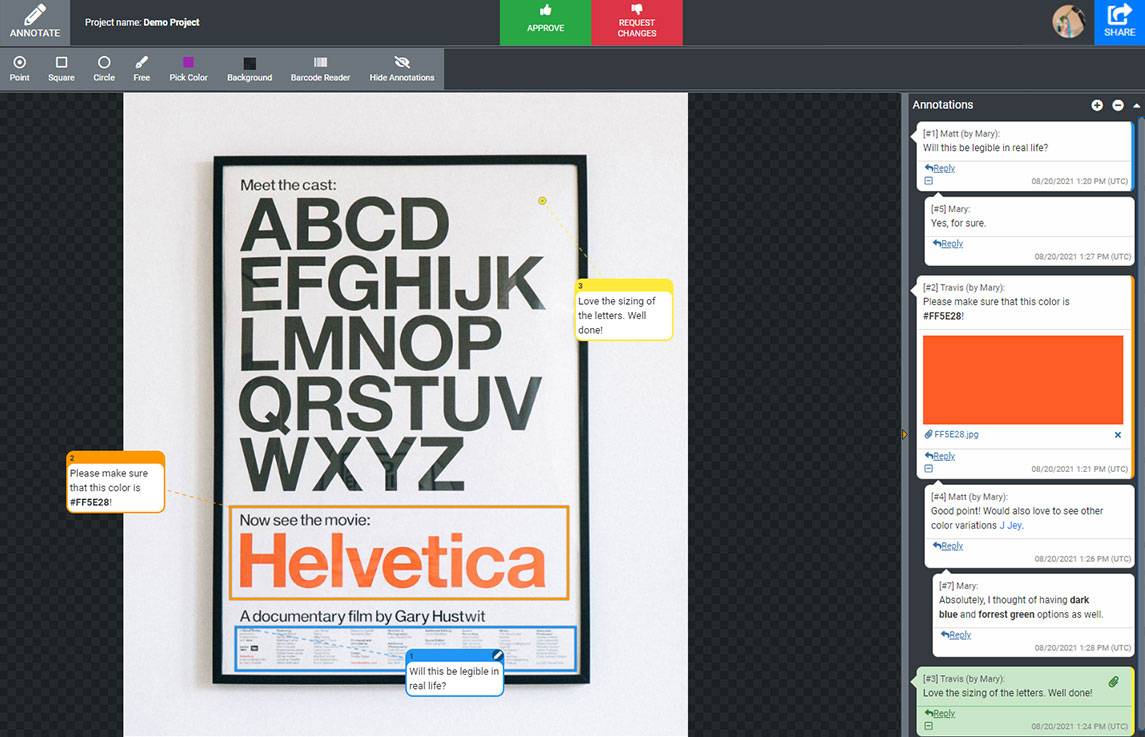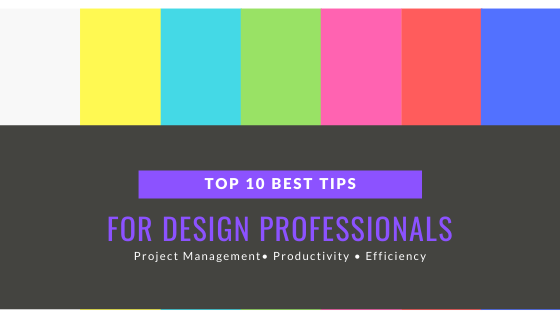Graphic design is something that takes its own separate place among all other creative industries. Want it or not, we interact with it all the time almost every minute of our lives.
You see visual imagery everywhere – billboards on the streets, your daily Instagram or Facebook feed, even when you’re at home looking at the package of the oatmeal you’ve just bought in the supermarket. Visuals came into our lives long ago and now are, in fact, one of the biggest ways of influence.
However, before the billboards and packages hit their destinations and reach the target audience, they come a really long way – days of research, numerous heated arguments, a couple of sleepless nights, dozens of iterations, and more. Far from easy, but nobody promised it would be, right?
Graphic design project management is a very interesting process indeed. If you’re a project manager or have ever participated in management, you’ll surely understand what I mean: it is all about controlling the most uncontrollable and chaotic thing in the world after chaos itself – creativity. Creativity is one of those things that many people believe to be something random and spontaneous, and, to some extent, it is true. However, I believe that controlling it is mostly a matter of skill and understanding of what you’re dealing with, finding the right approach.
Hence, I would like to share with you some tips on design project management that will increase your productivity.
Table of contents:
Project Management for Design Professionals – 10 Best Tips
№1: Don’t confuse your job with art

This is by far the most controversial one. I’ve seen dozens of discussions about the topic, participated in some as well, and there’s never a complete agreement about this one. My opinion is very simple because I prefer to get down to basics in such matters: the main function of art is to inspire, evoke feelings, convey the idea, provide aesthetic satisfaction. I already know what you’re thinking: “But hey, Approval Studio blog dude, ain’t it the same with a good ad?”
Only partly.
You can make a state-of-the-art ad, true, but its ultimate purpose is to make the audience pay attention to the product, make them buy it. At the same time, art exists purely for the sake of art. When you make an ad, you have a client and you have requirements. When you paint a picture, you make an exhibition and wait till someone buys it. These are not the same – design is more like math, when you have to count different factors, calculate everything. Art is always more personal. And the first step to successful project management for graphic designers is to understand it.
№2: Do your research

As I’ve mentioned, design projects involve a lot of calculations. Research everything you can – from your client to their own customer base and competitors, from the freshest trends to industry biggest failures that can help you. I would take the research process as a whole and divide it into two different stages:
- Macro – concentrates on more general stuff like trends in the design industry as a whole, general audience preferences, and etc. If you’re running an agency that deals with design projects on a regular basis, you should be familiar with these, but it never hurts to double-check something.
- Micro – pays more attention to the details depending on the specific sphere of your project. Are you working on a sports brand logo? Packaging for a fizzy drink? Merchandise T-shirt design for a brand? Consider the personal history of the client, their audience preferences, be more scrupulous about the information you’re after. The more you know, the more ideas sources you have, and the lesser is the chance that you might do something wrong.
№3: Take creating your perfect workflow seriously

This is like having a perfect weapon for each situation, even the most unpredictable one. Should be gold for a good project manager, really. It is good to have a short-term template, a long-term template, some standard templates for big and small companies with minor differences depending on the type of work and industry you’re working for. It will help you to organize your work and be ready literally for every client’ request, which makes your company much more likeable and professional. Besides, managing standardized projects is much easier, so you can minimize the chances of any unpredictability. If you want to read more about the topic, I bet you’ll dig one of our more recent articles!
№4: Use special collaboration software

Software always makes your work easier, and the right software saves project managers tons of time and money. In terms of graphic design, usual PM apps might help you out with your creative process but they won’t make enough difference. What you need is something to work with your visual files – an efficient instrument to exchange feedback between all the parties involved.
If you’re looking for something like this, Approval Studio is definitely worth a shot. It has a lot of interesting functions that make feedback exchange as easy as it can possibly be and allows versions comparison to track all the edits. It also has a detailed audit trail for each project, which might help you significantly with the next point…
№5: Record everything

Whatever your decision might be, it is better to keep track of all of your actions and reasons for them. Client requested changes – you discussed them during a meeting – found another, better solution because of some fact or statistic – applied the edits. The process needs tracking. It will help you to explain your creative decisions at the final presentation of the mockup and will give you more confidence that you’re on the right track. Some things like your research and market analysis should always be at hand to back you up at any minute.
№6: Do not create too many different variants of the mockup

Too much is never too good, and quantity doesn’t mean quality. Some agencies think that if they give their client more variety, it will make them look more professional, and they’ll have less work left to do, cuz the client is provided with wider choice. In fact, giving your client 15 different logo mockups disperses their attention, and, instead of polishing one variant and making it great, you’ll be dashing back and forth between all so-so variants always changing the preferences.
The better your initial creative brief and analysis of the market situation are, the narrower the choice will become. When the range is too wide, it only means you are not sure what to do while you have to know exactly. You can offer several options and go with the one that in the perspective should prove more effective than the other, but not more. That’s the whole drill – put it into practice!
№7: Always have a back-up plan

The thing about having multiple templates ready to launch at any moment can save everybody’s necks during an emergency. In case the deadline was shortened or prolonged, the stakeholders changed, the type of work changed – you can always be in shape and kick it off with the right project development right away. Being flexible and having the ability to adapt to changes, both big and small, is one of the most valuable characteristics in such a fast-paced world. Be ready for everything and make sure everybody knows what to do so that no one panics.
№8: Don’t re-do your colleagues work

So, you have the entire project planned out to the tiniest elements, and everything seems to be fine. You’re working with the fonts, and finally the designer sends you the sketch of how everything should look like. It kinda looks like what was planned, but … you don’t like it and feel you could do better. Your options:
- Discuss it with the team members, request changes.
- Fix what you don’t like yourself.
Opting for variant B, you depreciate your colleagues’ work, creating a conflicting situation out of nowhere because of your personal taste/reasoning/ambition (underline the correct one) – it won’t do anyone no good. If you think the change is really worth it, share your thoughts with the design team and make the final decision together. Changing the plan and the flow of the project single-handedly is also very risky and can only worsen the result.
№9: Avoid last-minute fixes

It’s 4 am, the project is ready and you’re having a final client presentation in several hours. Everything’s fine but something bothers you – a shade of color, font size, or that one line you could actually draw better…
The best thing you can do in such situation is to turn to other side and finally fall asleep. Applying last-minute changes can do more harm than good, you might start adding edit after an edit and change the mockup to something very different from what you were planning. Sleep over with the change ideas, if they’re still there – discuss them with someone before the presentation starts to get reassured. Most likely it’s your perfectionism playing tricks with you and making you believe you could do better. Listen to it when you have enough time, but toss it out of your head right before you close the deal.
№10: Go with the flow

If you want to be on top and achieve your creative project goals, you have to follow the news in your sphere of work. Things like the design industry and creative process trends change every day and bring us some new interesting tendencies, ideas, and thinking material in general. Tracking down all the latest decisions and fresh views are not for the most curious minds to look for when they finish their working day – it’s important to everybody. It is not a hobby, it’s a significant part of the workflow, because being up-to-date with everything will help you to stay relevant.
Final Thoughts
Increasing the quality of the creative team performance might contrast a lot with the creativity itself – it should be steady, methodological, and sometimes even plain boring. However, if you learn how to do that, you can take your performance to another level. Controlling creativity is not easy, but it is more than possible. Some people who did not believe me at first even started finding some joy in such a steady and patient approach later, so you never know…
However, we all know what tool is best for streamlining the approval of visual assets, don’t we? Approval Studio is waiting for you, and also for your thoughts about successful design management in the comments!

 TEAM SOLUTIONS
TEAM SOLUTIONS WORKFLOW SOLUTIONS
WORKFLOW SOLUTIONS



 REVIEW TOOL
REVIEW TOOL PROJECT MANAGEMENT
PROJECT MANAGEMENT TOOLS & INTEGRATIONS
TOOLS & INTEGRATIONS
 CLIENT INTERVIEWS
CLIENT INTERVIEWS









